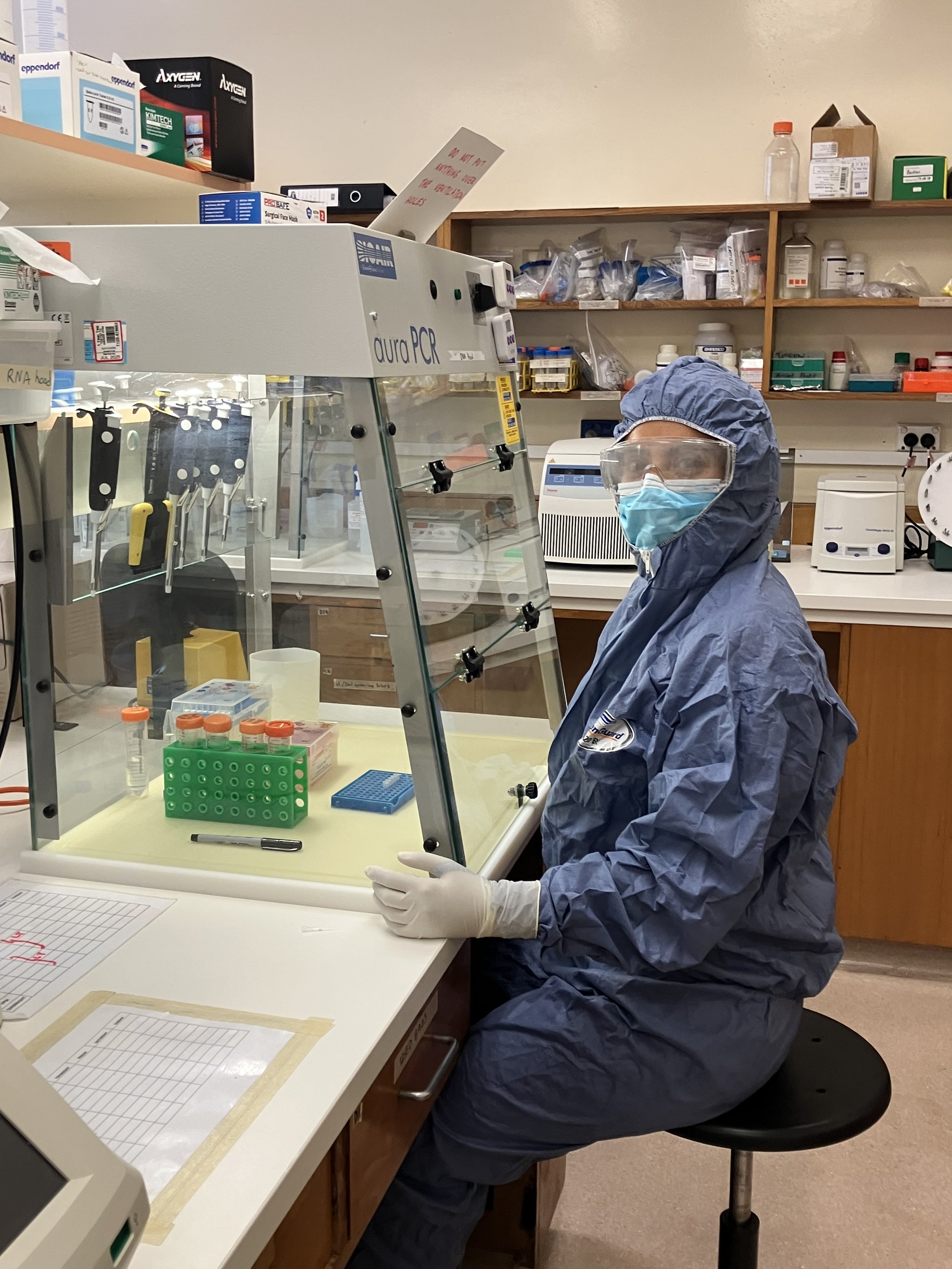Australian palaeoenvironments and biodiversity to be reconstructed through metagenomic analysis of sedimentary ancient DNA by national collaboration with Indigenous partners
Dr Vilma Pérez uses environmental DNA techniques to understand when and how environments have changed and responded to disturbances
A fascinating new project now has access to the specific computational resources required to build high resolution records of Australia’s changing ecosystems over the past millennium. The research will reconstruct Australian palaeoenvironments and biodiversity using metagenomic analysis of sedimentary ancient DNA collected from mainland Australia and the Torres Strait Islands as part of codesigned projects involving leading Australian researchers and Indigenous partner organisations. Streamlined bioinformatics analysis pipelines will be essential to process the large volume of samples expected to come in from this collaboration.
Sedimentary ancient DNA (sedaDNA) analysis is a transformative tool for studying past biodiversity and its responses to environmental, climatic, and human-induced change. The project aims to build capacity for the growth of sedaDNA research in Australia by automating bioinformatic analyses into a single Nextflow pipeline that can easily produce a robust and reproducible taxonomic profile of both modern and ancient target species found in sediment samples. BioCommons was keen to support the research with access to both ABLeS and our Australian Nextflow Seqera Service.
This project is part of the ARC Centre of Excellence for Indigenous and Environmental Histories and Futures (CIEHF) which seeks to create a lasting impact by integrating Indigenous and Western knowledge frameworks to model environmental, cultural, and historical change in Australia over the past millennium and into the near future.
Dr Vilma Pérez is an environmental microbial ecologist at the Australian Centre for Ancient DNA, The University of Adelaide, who can now access the national computational infrastructure she needs for her research after being onboarded to BioCommons’ ABLeS and Seqera services. Vilma's expertise in using environmental DNA techniques to understand when and how environments have changed and responded to disturbances will be put to good use in CIEHF’s novel genetics research program.
Led by CIEHF Chief Investigator Assoc Prof Ray Tobler from the Evolution of Cultural Diversity Initiative at the Australian National University, the research program will use high-resolution landscape genomic analyses of selected Australian native flora and fauna, as well as ancient DNA recovered from archaeological sediments (sedaDNA).
This work will help reconstruct past Australian ecosystems to understand how biodiversity, from microbes to plants and animals, has changed over time, and how it has responded to environmental shifts, including Indigenous Australian landscape management practices that have helped care for Country for thousands of years.
Gaining access to the right computing infrastructure is one thing, but appropriate computing and data management mechanisms are needed to ensure that Indigenous genomic data resources are ethically managed to the benefit of Indigenous Australians. Mutual partners, Bioplatforms Australia, were able to connect CIEHF with colleagues at the National Computational Infrastructure (NCI) who are working with the National Centre for Indigenous Genomics (NCIG) to host their sensitive sequencing data. Given Indigenous genetics research requires unique ethical approaches, NCIG is leading the way in building a genome resource for the research community under Indigenous Governance and will no doubt have many insights to share.
As part of our ongoing support for CIEHF, Dr Ziad Al Bkhetan, Product Manager - Bioinformatics Platforms at BioCommons, and Dr Kelly Scarlett, Manager - Partnerships and Engagement at Bioplatforms Australia will participate in an upcoming sedaDNA workshop hosted by CIEHF researchers at the University of Adelaide.
This workshop sits within the Genomics research stream which is part of a suite of nine chosen to ensure a holistic, interdisciplinary approach. Find out more about how CIEHF’s research streams are addressing unique environmental, cultural, and historical complexities of Australia through an integrated approach, leveraging both Indigenous knowledge systems and researcher’s fields of expertise.

